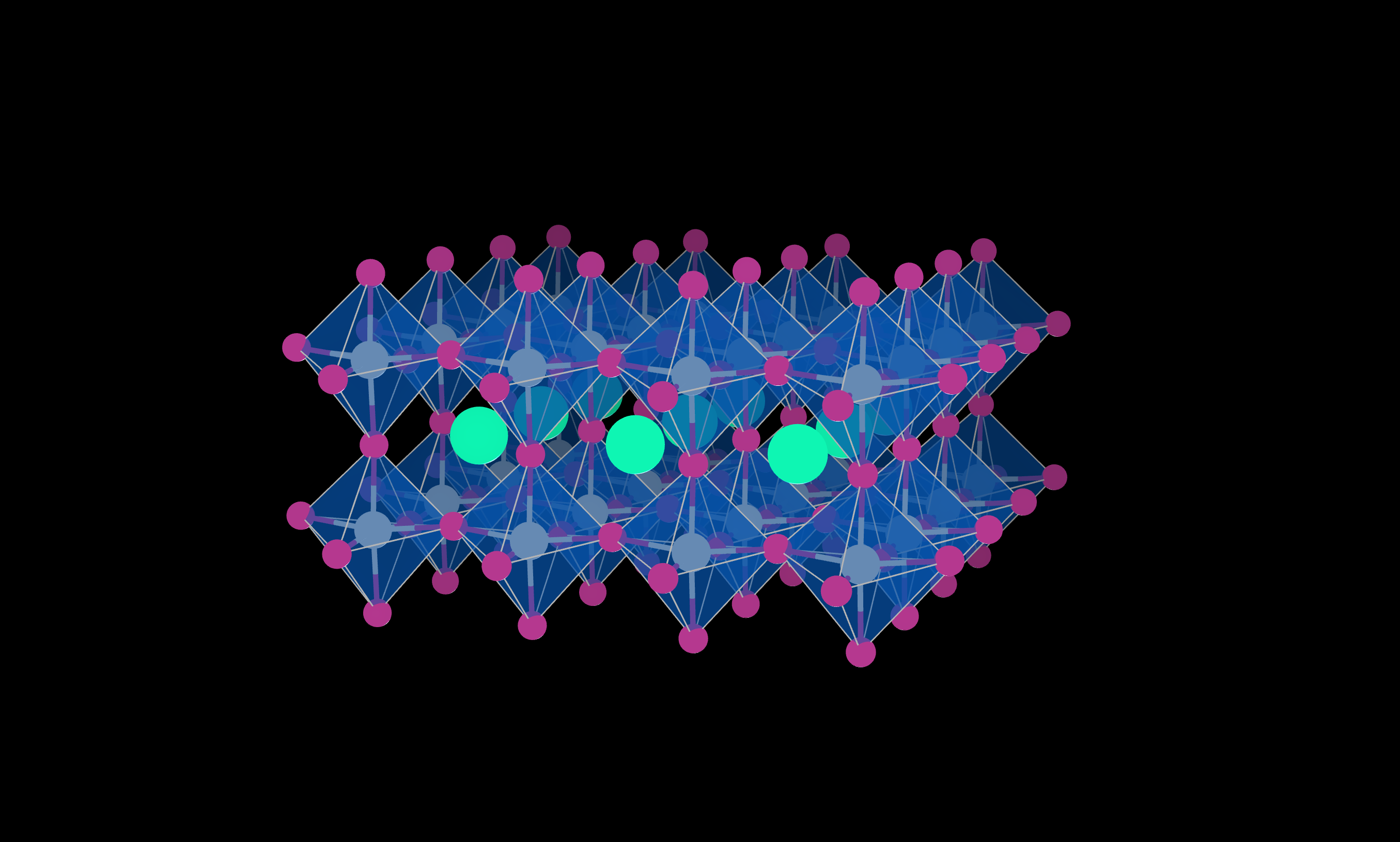During Summer 2018, I had a research project at Stanford Synchrotron Radiation Lightsource (SSRL) that was wrapping up my masters degree in chemical physics at ESPCI Paris. I used to work on alloys of halide perovskites, aimed at photovoltaic applications. Some part of the work I did there has been published this week in Matter. I take this opportunity to blog about hybrid perovskites for photovoltaics and how we address one of the current limitations this system faces.
Hybrid halide perovskites for photovoltaics
It is no secret on this blog that the perovskite structure is composed of a BX₆ octahedral framework, in the interstices of which A cations are placed. The band gap of the halide perovskite structure largely relies on the length of the B-X bond, as the valence band is an hybrid of metal (B) p and halide (X) p orbital and the conduction band is an anti-bonding combination of metal s and halide p orbital. Thus, a lengthening of the B-X bond would decrease the orbital overlap, stabilise the valence band, hence reducing the band gap.

As a result, compositional adjustments of the A and X lattice have shown abilities to distort the perovskite structure and tune the band gap of the material to target specific applications. Particularly, one of the applications that has the potential to reach the market soon is the production of tandem solar cells, that are silicon cells on top of which a perovskite layer is spun. The key requirement for maximising the efficiency of such a cell is to have the perovskite absorbing low photon energies, and the silicon beneath absorbing the high energy photons that would pass through the perovskite layer. To do this, a number of studies have shown that compositions combining formamidinium (FA) and cesium (Cs) on the A site, lead (Pb) on the B site and a mixture of bromine (Br) and iodine (I) on the X site would allow the production of tandem cells with an optimised band gap.
Photo-induced degradation
However, the perovskites of the form (FAyCs1-y) Pb (BrxI1-x)3 are subject to photo-induced phase segregation. In fact, under illumination, thin films made of these alloyed halide perovskites segregate between iodine-rich regions and bromine-enriched domains. Iodine-rich regions have a lower band-gap, that funnels recombination of charge-carriers through energetically-favourable pathways, limiting the voltage of devices, thus reducing the efficiency of solar cells.
Results
However, if the influence of the composition on optical stability is known, the impact of the crystal structure and the changes in morphology had not been isolated from optical instabilities. In this paper, we explored the phase segregation behaviour of perovskites of the form (FAyCs1-y) Pb (BrxI1-x)3, processed as thin films, with controlled morphology.
We used synchrotron x-ray diffraction to map these alloys across the cubic-tetragonal solvus. We coupled these measurements with time-dependent photoluminescence spectroscopy to assess stability under illumination. In the paper, we report that there is an imperfect correlation between the crystallographic phase and the phase segregation behaviour. Notably, we find an island of optical stability onto the phase diagram, that lies in the tetragonal phase. Our conclusion is that the phase is not the sole determinant for optical stability. Then, we proposed several phase segregation mechanisms by eliminating some of the current beliefs with our measurements.
In short, phase segregation is currently limiting mass production of perovskite tandem solar cells. Understanding it and getting over this limit may equip perovskite technology with impressive abilities to target climate change. We proposed here a conceptual framework within which optical stability can be explored. More work is obviously necessary to fully understand both the thermodynamics and kinetics of photo-induced phase segregation, everything of this may guide the design of mixed halide perovskite with optimised band-gaps.
Reference:
Structural origins of light-induced phase segregation in organic-inorganic halide perovskite photovoltaic materials
Rachel E. Beal, Nanna Zhou Hagström, Julien Barrier, Aryeh Gold-Parker
Rohit Prasanna, Kevin A. Bush, Donata Passarello, Laura T. Schelhas,
Karsten Brüning, Christopher J. Tassone, Hans-Georg Steinrück,
Michael D. McGehee, Michael F. Toney, and Ana Flávia Nogueira.
Matter. Volume 02. Issue 01. pages 1-13. January 2020
DOI: 10.1016/j.matt.2019.11.001
 0000-0002-6484-2157
0000-0002-6484-2157